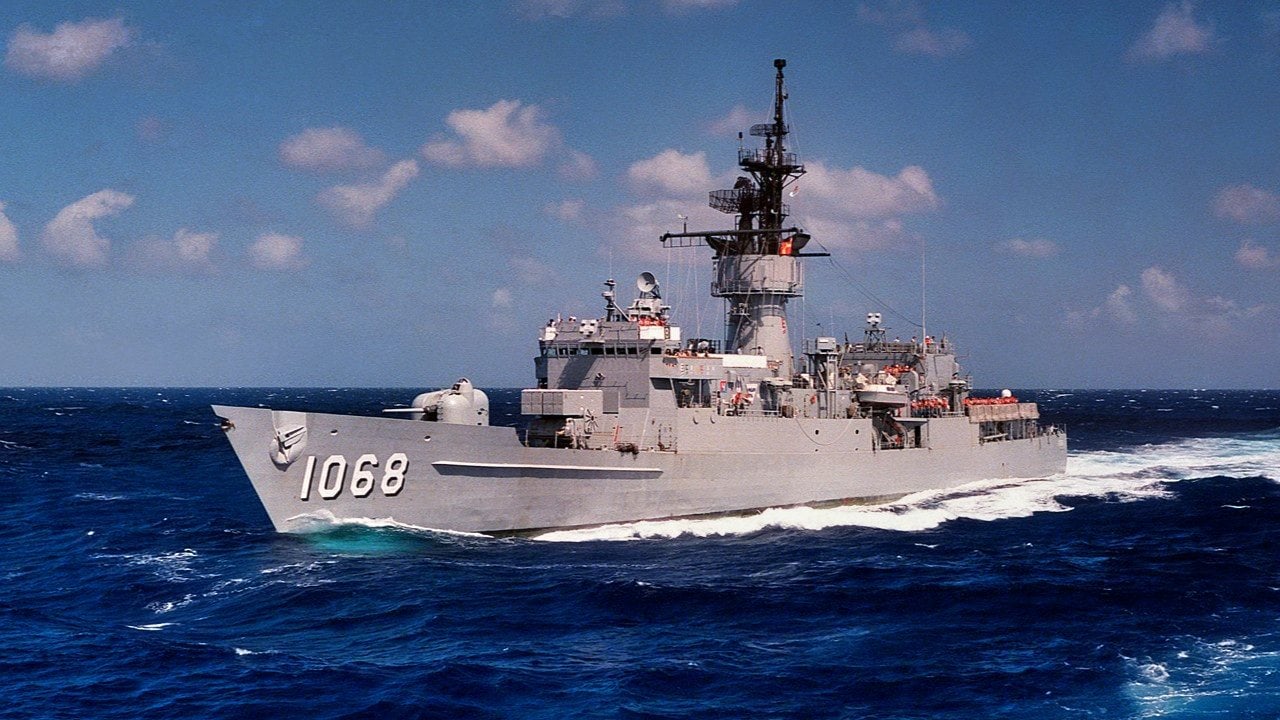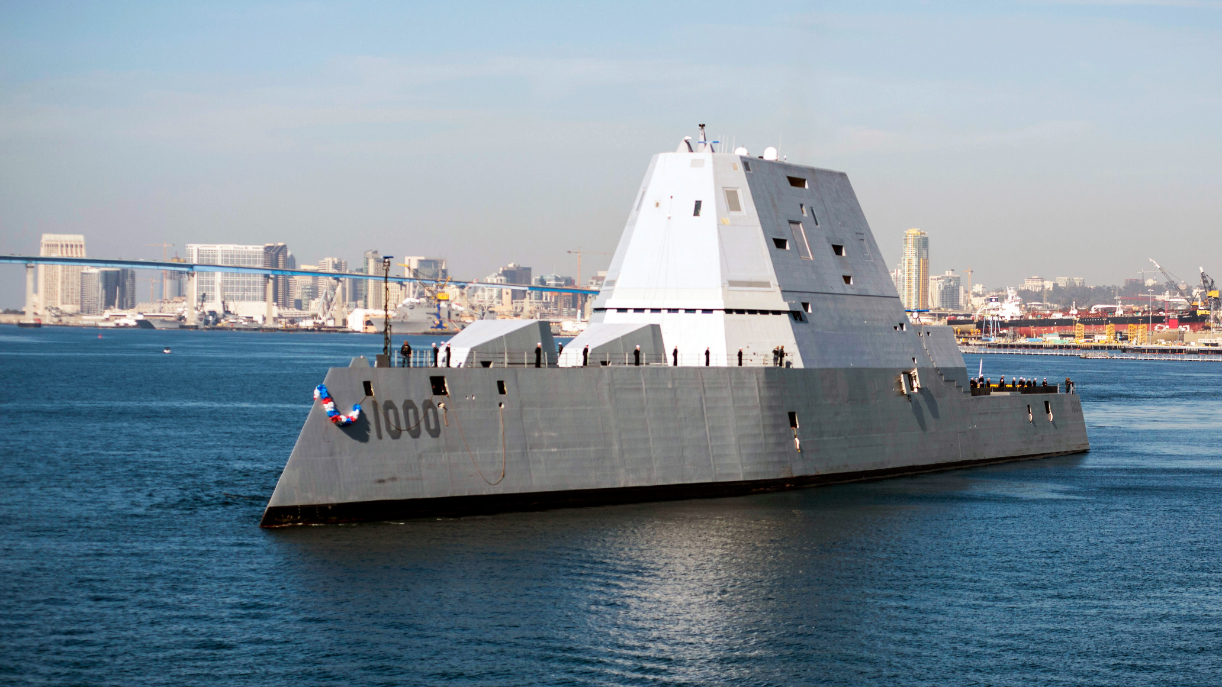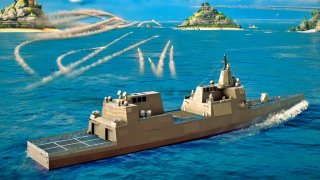Laser Weapons: A Costly Catch-22 for the U.S. Navy
The development of laser weapons by the U.S. Navy is caught in a "catch-22": while lasers could provide a cost-effective solution to shooting down drones and missiles, their development is expensive and slow due to technological challenges and a lack of commercial demand.
Summary and Key Points: The development of laser weapons by the U.S. Navy is caught in a "catch-22": while lasers could provide a cost-effective solution to shooting down drones and missiles, their development is expensive and slow due to technological challenges and a lack of commercial demand.

-Current laser technology is insufficient for high-speed threats, leading the Navy to continue using costly anti-drone missiles.
-Despite the promise of lasers as a future defensive tool, their effectiveness will be limited, requiring them to be part of a layered defense system alongside traditional missiles and close-in weapon systems (CIWS).
Can Lasers Save the Navy Money? The Cost-Effectiveness Debate
The 1961 satirical war novel Catch-22 introduce the term of the same name, which is now used to explain a paradoxical situation that is difficult or impossible to overcome. It is a "catch-22" that could impact the development of lasers as a weapon to down enemy drones and other small aerial threats – namely that the lasers are could be too expensive to develop to offer a low-cost solution to shooting down drones.
Vice Adm. Brendan McLane, commander of the U.S Navy's Surface Forces Pacific, recently stated his frustration that the development of such directed energy weapons (DEWs) was taking long, despite an effort, comes to the fact that there is no commercial market for a laser that could be powerful enough to shoot down an enemy missile, Defense One reported this month.
There was, of course, a time when the military pushed forward with programs – notably the atomic bomb – where cost was never an issue. Today, the Pentagon has so many expensive programs in the works it simply can't afford another one, which is why that lack of commercial market for the technology remains an issue.

The other problem is that current laser technology doesn't quite deliver as promised, which put into question whether the efforts are worth the investment.
"To be sure, the Navy has deployed experimental and prototype lasers and other directed-energy weapons for more than a decade. Eight warships currently carry the Optical Dazzling Interdictor, Navy, or ODIN, a small laser to blind the sensors of incoming drones and missiles. But it doesn't do well against weapons that move really fast or lack optical sensors," Patrick Tucker, science & technology editor for Defense One wrote, explaining the current state of the U.S. Navy's efforts.
Laser Efforts Continue
As previously reported, it has been more than two years since Congress provided the Missile Defense Agency (MDA) the authority to research and develop laser technology to use in ballistic and hypersonic missile defense applications, as part of the fiscal 2022 National Defense Authorization Act (NDDA). It was just one of the most recent attempts to push forward the development of lasers.
The Airborne Ballistic Laser program was first initiated in the 1970s, and then was pushed aggressively during the George W. Bush administration. Cost overruns and technical challenges caused the program to ultimately be downgraded, however.
If the program has hit repeated dead-ends, why is it being considered yet again? The rational is that the alternative is just as bad.

The U.S. Navy is now employing anti-drone and anti-missile missiles costing millions of dollars to shoot down low cost drones and cheap anti-ship missiles in the Red Sea. At the same time, the U.S. can't afford not to shoot down the missiles. So each "win" that comes from downing a drone fired by the Iran-backed Houthis is a costly one.
"Two key limitations that Navy surface ships currently have in defending themselves against UAVs and anti-ship missiles are limited depth of magazine and unfavorable cost exchange ratios," the Congressional Research Service warned in a new report, "Navy Shipboard Lasers: Background and Issues for Congress."
Lasers Are the Future – Maybe Not the Near Future
There is likely no denying that lasers should still be seen as the future. The issue is that the technology continues to remain costly to develop, and that aforementioned lack of commercial applications means it won't be a program that will ever be one of swords to plowshares. The biggest catch-22 of the program is that the U.S. Navy needs the technology, as it would prove to offer an alternative to costly anti-drone missiles, but the technology will be so expensive to develop that in the short term it may be cheaper to keep using those missiles.
The government watchdog called upon Congress to determine if the sea service is now moving too quickly, too slowly, or at about the right speed when it comes to the development of lasers; while it also needs a clear understanding of the Navy's plans to transition to lasers; and notably whether shipbuilding efforts include the space, weight, electrical power, and cooling capabilities for lasers.
And It Won't Totally Work
The final issue of lasers is that even if it can be perfected, it won't be a perfect solution.
William LaPlante, the Pentagon's acquisition chief told reporters last week that while lasers offer "a lot of promise… they're not the only answer, and they're going to have to be part of a layered system of defenses."
Admiral McLane acknowledged that fact, according to Defense One, stating, "We're still kind of with one piece of directed-energy equipment per ship as we're testing and learning. We haven't gone to the point where we can put multiple things on one ship to test theas you suggestlike the layered defense of something. But I think in the next few years we should be able to get there."
In other words, lasers aren't going to be a magic solution, even when they are finally installed on ships.
Range will remain an issue, and currently most lasers only can only strike a target at a distance less than a mile. Even the most optimistic projections for the near future still only suggest that lasers will be viable at ranges of less than five miles. That might seem like quite the distance, but the missile that was destroyed by the Phalanx CIWS onboard the Arleigh Burke-class guided-missile destroyer USS Gravely earlier this year was within a mile, mere seconds away.

The U.S. Navy can't risk allowing the missiles to come that close if it can help it, and even five miles means there isn't a lot of time left on the clock to respond, especially against threats like hypersonic missiles. Failing to counter the threat would be disastrous, which is another reason why the development of lasers is likely to be slow going – as at best, it would only be part of a defensive net, along with those missiles and CIWS.
Of course, as drones and other threats increase, the warships of the future might need every defensive system they can get.
Author Experience and Expertise: Peter Suciu
Peter Suciu is a Michigan-based writer. He has contributed to more than four dozen magazines, newspapers, and websites with over 3,200 published pieces over a twenty-year career in journalism. He regularly writes about military hardware, firearms history, cybersecurity, politics, and international affairs. Peter is also a Contributing Writer for Forbes and Clearance Jobs. You can follow him on Twitter: @PeterSuciu. You can email the author: [email protected].
Image Credit: Creative Commons.


